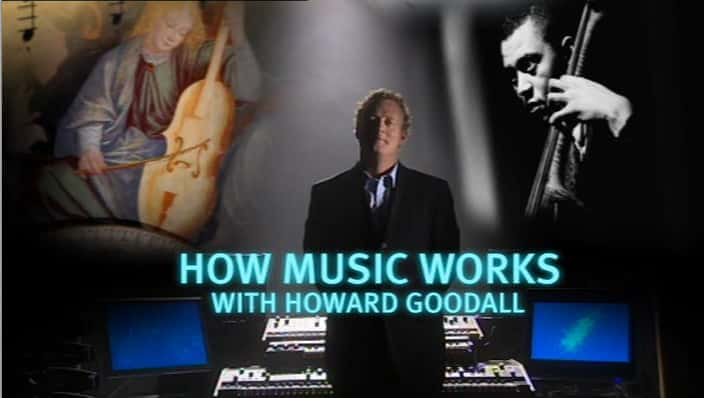|
|
How Music Works - 纪录片1080P/720P/360P高清标清网盘迅雷下载

How Music Works - 纪录片1080P/720P/360P高清标清网盘迅雷下载
How Music Works,ABBA - The Mamma Mia Story,Astor Piazzolla - In Portrait,Beatles in Love,Bolero: A Global Hit,Castrato,Christmas '77 with the Sex Pistols,Cool and Crazy,David Bowie - Cracked Actor,David Bowie and the story of Ziggy Stardust,Discovering Tchaikovsky
General Information:
Arts Documentary narrated by Howard Goodallpublished by Channel 4 in 2006 - English narration
Information
Why do some rhythms get our toes tapping, while others make us feel mellow? How does a love song bring tears to our eyes? What links African drumming to J S Bach?
In this new four-part series composer Howard Goodall strips music down to its essential parts to find out how music works.
We all respond to music – whether clicking our fingers, humming along or dancing – there's something out there for everyone. In this series Goodall looks at melody, rhythm, harmony and bass to establish how music is made and how it comes to reflect different cultures.
Setting out on a journey that spans the globe and moves through the centuries, Goodall uncovers the elements that are shared by all styles of music. Following a trail of diverse musical talents from Mahler to David Bowie; the blues to Bulgarian folk songs; medieval choral music to disco; he reveals the tried and tested tricks of the composer's trade.
Melody
Why does melody affect us so deeply, from the moment we are born? Tunes touch our deepest emotions, and are capable of inspiring love, sorrow, faith, and hope. But how does a melody actually work? In this film composer Howard Goodall looks at melody's basic elements. Why are some melodic shapes common to all cultures across the world? Can successful melodies be written at random? If not, what are the familiar melodic patterns composers of all types of music have fallen back on again and again, and why do they work? Setting out on a journey that moves through the centuries, Howard looks at the curious link between Tudor England and the Mississippi Delta, and uncovers melodic shapes common to all cultures across the world. Following a trail of diverse musical sources from Gustav Mahler to Paul Simon, Shaker hymns to Bulgarian folk songs, medieval choral music to the Broadway showstoppers he reveals the tried and tested tricks of the composer's trade.
Rhythm
From the moment our hearts start beating, rhythm is integral to us all. From walking to dancing, from clicking our fingers to tapping our toes, we are all programmed to respond to rhythm. In this film Howard looks at the common rhythmic patterns that have been used by musicians from all cultures, from Brahms to rappers, from the founders of Cuban son to Philip Glass, from Stevie Wonder to Fats Waller. Why do some rhythms make us want to dance, while others make us feel tranquil? How does rhythm 'work' when there is no obvious pulse, as in much classical music? What links African drumming to J S Bach? Why do virtually all popular singers sing ahead of the beat? And how is it that a tiny Caribbean island has produced a rhythm that dominates popular music the world over?
Harmony
In the late middle ages western harmony started on a journey that would take it in a completely separate direction to that of the music of other parts of the world. It discovered chords, and, over the next seven centuries, began to unlock their harmonic possibilities. In this film Howard looks at how western harmony works, and how, in the present day, it has fused with other forms of music to create new styles. Chords led to chord progressions, and Howard looks at how familiar patterns of chord progressions give all kinds of music � from classical to popular � their sense of forward movement. Why do the same chord patterns appear again and again, from Renaissance Italy to the latest chart hit? Musicians have always liked to tamper with the basic chords, and experiment with dissonance. We see how these tricks of the trade actually work, and the emotional and musical effect they have. From the folk musicians of the middle ages to Bach, Beethoven, and Wagner, from Chuck Berry to David Bowie, Hendrix to Coldplay, the same harmonic techniques surface again and again.
Bass
Music is usually broken down into melody, rhythm and harmony. But what about the very lowest notes in music, that can have an impact on all three? In this film Howard looks at the abiding fascination musicians and composers have had with the bass. For half a millennium instrument makers have been trying to construct instruments of all shapes and sizes capable of thudding, sonorous low notes. Only with the arrival of the synthesizer did they succeed in producing a rival to the mighty organ. With disco, dance, and drum 'n' bass, the bass has arrived centre stage. But bass notes have another, crucial role. Far from just plodding away in the background, bass lines can have a critical effect on the whole structure of a piece of music, helping to drive the chord progressions.
Technical Specs
Video Codec: XviD
Video Bitrate: 1250 kb/s
Video Resolution: 704x400
Video Aspect Ratio: 16:9
Video Framerate: 25 fps
Audio Codec: MP3
Audio Bitrate: 192 kb/s 48KHz
Audio Channels: 2
Runtime per Part: 49:00
Number of Parts: 4
Part Size: 500MB
Capped by: UKNova
☆☆☆~~~~~~~~~~~~~~~~~~~~~~~~~~~
How Music Works - 纪录片1080P/720P/360P高清标清网盘迅雷下载
下载地址:
游客 文件下载链接就在这里,在您回复评论成功后才能显示。
请勿回复无意义的灌水内容。下拉页面到最底部回复或者 【点击此处快捷回复】,回复后返回此处即可查看下载链接。 如您没注册本站会员,可以点击 注册本站,注册后即可回复下载。 |
小贴士:【影视自媒体解说文案请移步:夏至文案解说网 www.xiazhi.vip】上一篇:How Art Began - 纪录片1080P/720P/360P高清标清网盘迅雷下载下一篇:How Star Wars Changed the World - 纪录片1080P/720P/360P高清标清网盘迅雷下载
|